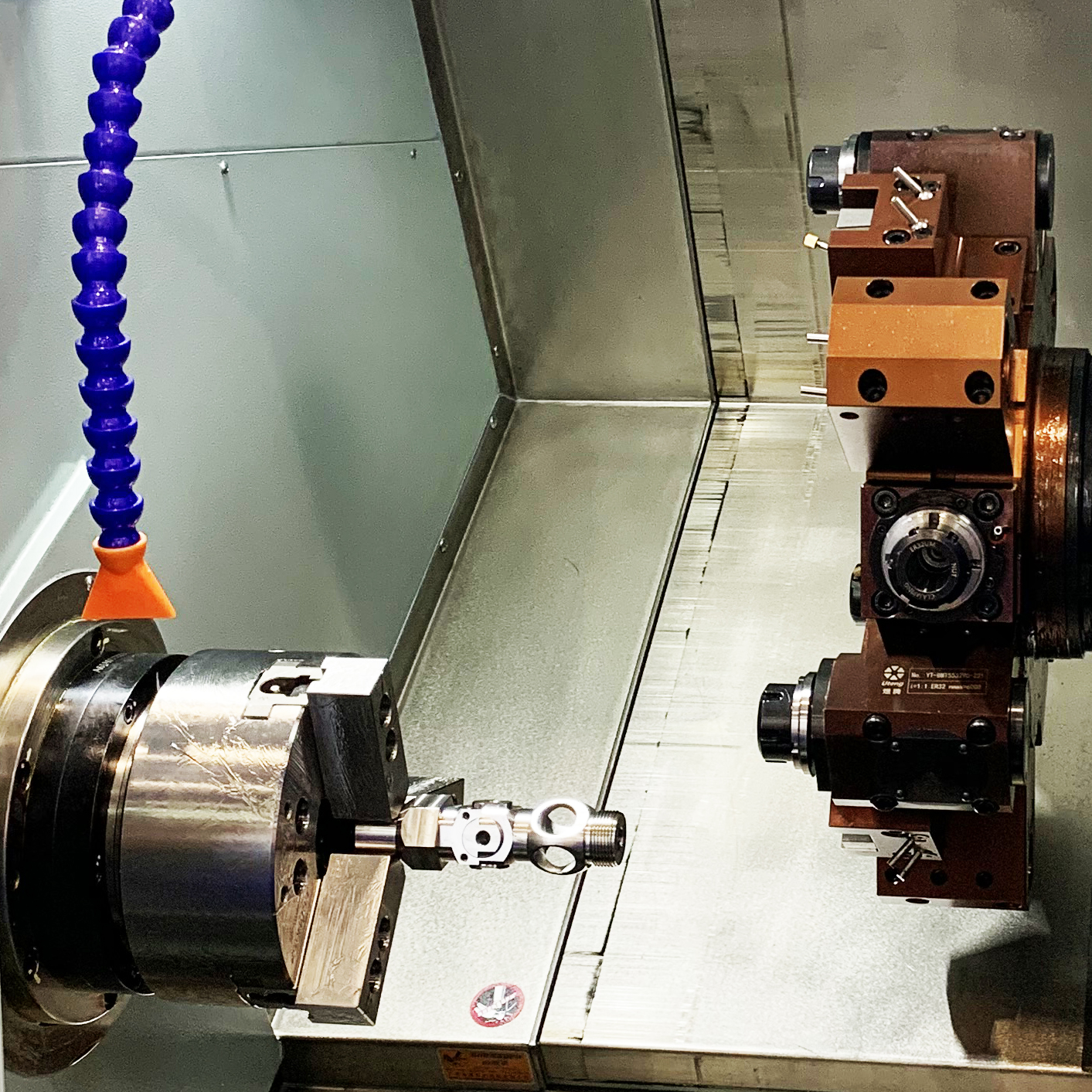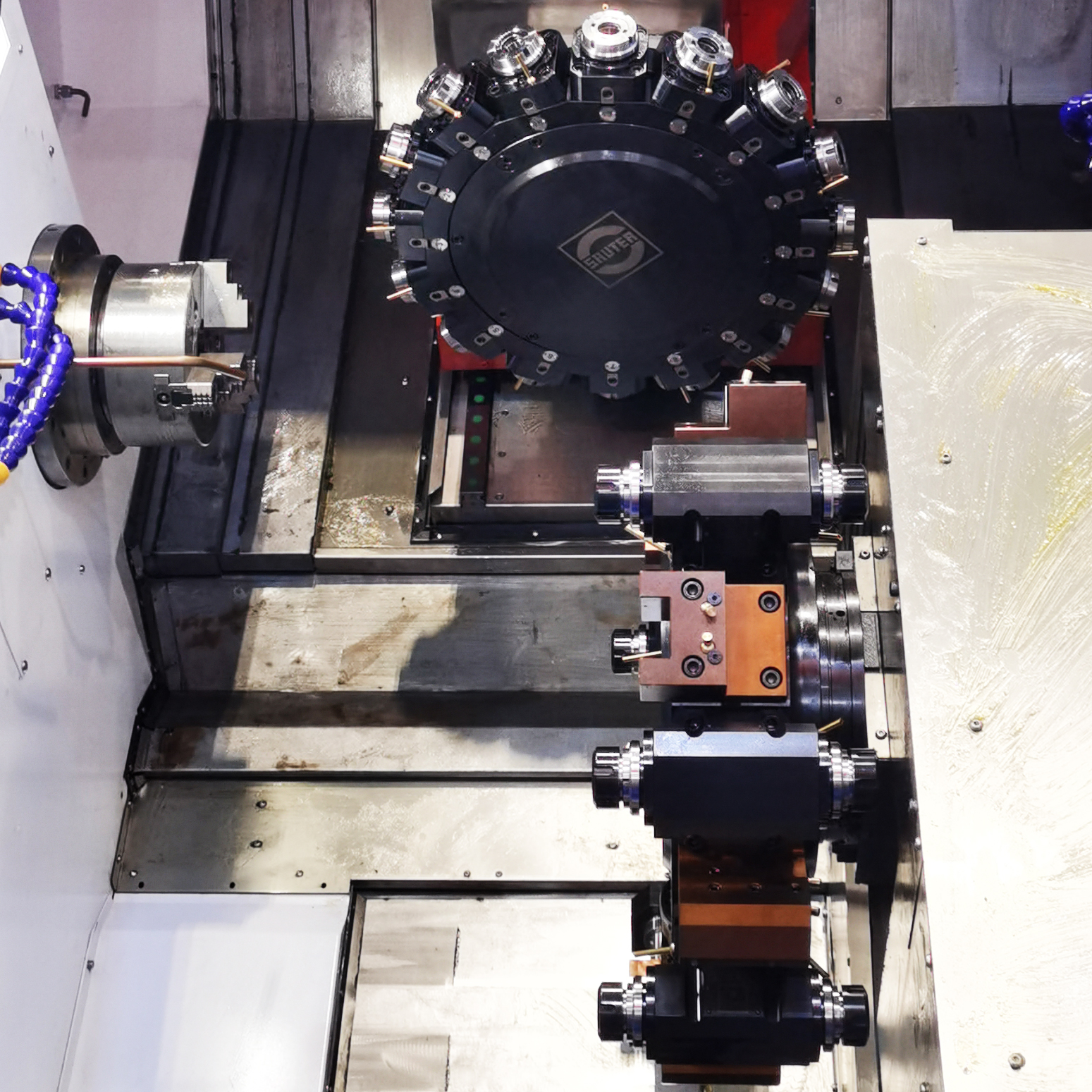1
Influence on cutting temperature: cutting speed, feed rate, back cutting amount.
Influence on cutting force: back cutting amount, feed rate, cutting speed.
Influence on tool durability: cutting speed, feed rate, back cutting amount.
2
When the amount of back engagement doubles, the cutting force doubles;
When the feed rate is doubled, the cutting force increases by about 70%;
When the cutting speed doubles, the cutting force gradually decreases;
In other words, if G99 is used, the cutting speed will increase, but the cutting force will not change much.
3
According to the discharge of iron filings, it can be judged whether the cutting force and cutting temperature are within the normal range.
When the actual value X measured and the diameter Y of the drawing is greater than 0.8, the turning tool with a secondary deflection angle of 52 degrees (that is, the commonly used turning tool with a blade of 35 degrees and a leading deflection angle of 93 degrees) The R out of the car may wipe the knife at the starting position.
5
The temperature represented by the color of iron filings: white is less than 200 degrees
Yellow 220-240 degrees
Dark blue 290 degrees
Blue 320-350 degrees
Purple black greater than 500 degrees
Red is greater than 800 degrees
6
FUNAC OI mtc generally defaults to G command:
G69: not sure
G21: Metric size input
G25: Spindle speed fluctuation detection disconnected
G80: Canned cycle cancel
G54: default coordinate system
G18: ZX plane selection
G96 (G97): constant linear speed control
G99: Feed per revolution
G40: Tool nose compensation cancel (G41 G42)
G22: storage stroke detection ON
G67: Macro program modal call cancel
G64: not sure
G13.1: Cancellation of polar coordinate interpolation mode
7
The external thread is generally 1.3P, and the internal thread is 1.08P.
8
Thread speed S1200/pitch*safety factor (generally 0.8).
9
Manual tool nose R compensation formula: from bottom to top, chamfering: Z=R*(1-tan(a/2)) X=R(1-tan(a/2))*tan(a) from top to top Get off the chamfer and change the minus to plus.
10
Every time the feed increases by 0.05, the speed decreases by 50-80 revolutions. This is because reducing the speed means that the tool wear decreases, and the cnc cutting force increases slowly, so as to make up for the increase in the feed that causes the cutting force to increase and the temperature to increase. Impact.
11
The influence of cutting speed and cutting force on the tool is very important, and the main reason for the tool to collapse due to excessive cutting force. The relationship between cutting speed and cutting force: when the cutting speed is faster, the feed remains unchanged, and the cutting force decreases slowly. The higher it is, when the cutting force and internal stress are too great for the insert to bear, it will chip (of course, there are also reasons such as stress and hardness drop caused by temperature changes).
12
When precision machining CNC lathes, the following points should be paid special attention to:
(1) For the current economical CNC lathes in my country, ordinary three-phase asynchronous motors are generally used to realize stepless speed change through frequency converters. If there is no mechanical deceleration, the output torque of the spindle is often insufficient at low speeds. If the cutting load is too large, it is easy to get bored Cars, but some machine tools have gear positions to solve this problem very well.
(2) As far as possible, the tool can complete the processing of one part or one work shift. In the finishing of large parts, special attention should be paid to avoid changing the tool in the middle to ensure that the tool can be processed at one time.
(3) When turning the thread with a CNC lathe, use a higher speed as much as possible to achieve high-quality and efficient production.
(4) Use G96 as much as possible.
(5) The basic concept of high-speed machining is to make the feed exceed the heat conduction speed, so that the cutting heat is discharged with the iron filings to isolate the cutting heat from the workpiece, so as to ensure that the workpiece does not heat up or heats up less. Therefore, high-speed machining is a very high choice. The cutting speed is matched with the high feed rate while selecting a smaller amount of back engagement.
(6) Pay attention to the compensation of the tool nose R.
13
Workpiece Material Machinability Grading Table (Minor P79)
Commonly used thread cutting times and back engagement scale (big P587)
Calculation formulas of commonly used geometric figures (big P42)
Inches to Millimeters Conversion Chart (Large P27)
14
Vibration and tool breakage often occur during grooving. The root cause of all this is that the cutting force becomes larger and the tool rigidity is not enough. The shorter the tool extension length, the smaller the relief angle, and the larger the blade area, the better the rigidity. With the greater cutting force, but the greater the width of the groove cutter, the cutting force it can withstand will increase accordingly, but its cutting force will also increase. On the contrary, the smaller the groove cutter, the smaller the force it can withstand, but its The cutting force is also small.
15
The reasons for the vibration during the slotting:
(1) The extension length of the tool is too long, resulting in a decrease in rigidity.
(2) The feed rate is too slow, which will cause the unit cutting force to increase and cause large-scale vibration. The formula is: P=F/back cutting amount*f P is the unit cutting force F is the cutting force, and the speed is too fast It will also vibrate the knife.
(3) The rigidity of the machine tool is not enough, that is to say, the tool can bear the cutting force, but the machine tool cannot bear it. To put it bluntly, the machine tool does not move. Generally, new beds do not have this kind of problem. The bed with this kind of problem is either old or old. Either you often encounter machine tool killers.
16
When I was driving a cargo, I found that the size was fine at the beginning, but after a few hours of work, I found that the size had changed and the size was unstable. The reason may be that the cutting force was not very strong because the knives were all new at the beginning. Large, but after a period of time, the tool wears out and the cutting force becomes larger, causing the workpiece to shift on the chuck, so the size is old and unstable.
Anebon have the most advanced production equipment, experienced and qualified engineers and workers, recognized quality control systems and a friendly professional sales team pre/after-sales support for China wholesale OEM Plastic ABS/PA/POM CNC Lathe CNC Milling 4 Axis/5 Axis CNC machining parts, CNC turning parts. Currently, Anebon is seeking ahead to even bigger cooperation with abroad customers according to mutual gains. Please experience free of charge to get in touch with us for more specifics.
2022 High quality China CNC and Machining, With a team of experienced and knowledgeable personnel, Anebon’s market covers South America, the USA, the Mid East, and North Africa. Many customers have become friends of Anebon after good cooperation with Anebon. If you have the requirement for any of our products, remember to contact us now. Anebon will look forward to hearing from you soon.
Post time: Feb-09-2023


